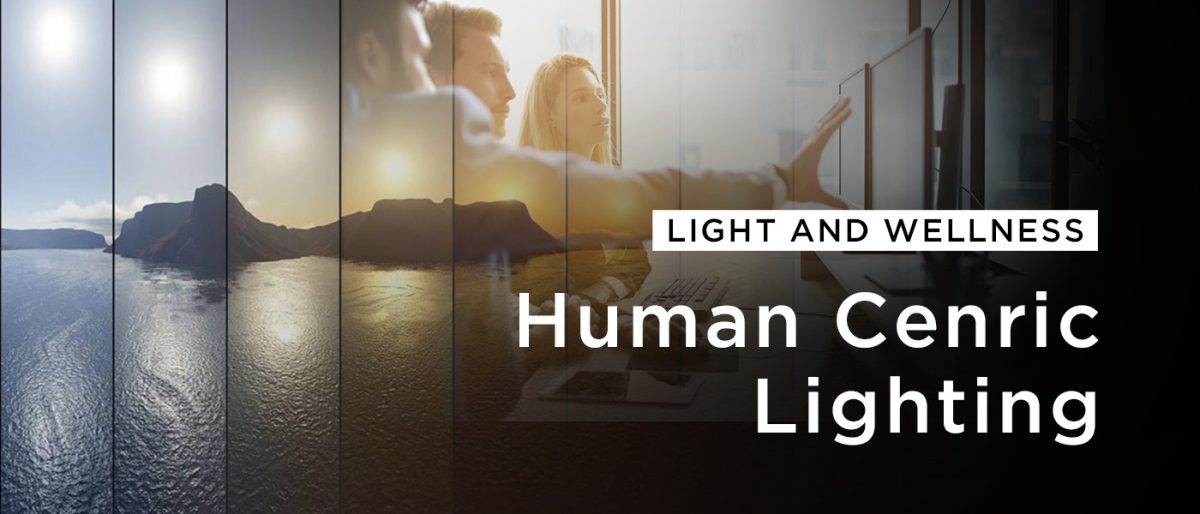Light is the electromagnetic radiation that provides the visual stimulus, furthermore light has both physiological and psychological effects on human being. This awareness has led to the rapid adoption of lighting recommendations that involve elements of human-centred lighting, thus giving birth to the binomial “light and well-being”.

One of the greatest obstacles to the production of human-centric enlightenment is the lack of information regarding the scientifically proven benefits. For this reason it is necessary to act to raise awareness in this direction.
The innovative ability, transversal skills and problem solving aptitude make the European market the best launch pad for this high tech sector.
The challenging topic “light and well-being” has the potential to become the next big goal in technologically advanced lighting, going beyond pure energy efficiency.
Light and its effects on circadian rhythm
Observing nature, we recognize the existence of rhythmic phenomena that embrace time intervals of different lengths: longer events such as hibernation or the alternation of the seasons and more contained ones such as the sleep/wake cycle or the blossoming of flowers.
Paying attention to our body has made us discover further rhythms, much shorter and inside our body such as heartbeat and breathing.
The biological rhythms contained in the 24 hours are called circadian rhythms because their duration is “about a day“.
How do biological systems keep time? Thanks to the influence of two factors:
- internal factors, the so-called biological clock which is located in the hypothalamus, and the “peripheral clocks” located at the level of the organs. In fact, circadian rhythms are identified in the liver, hypophysis, heart, kidneys and many other tissues.
- external factors, light and temperature
Listen to the nature to know yourself
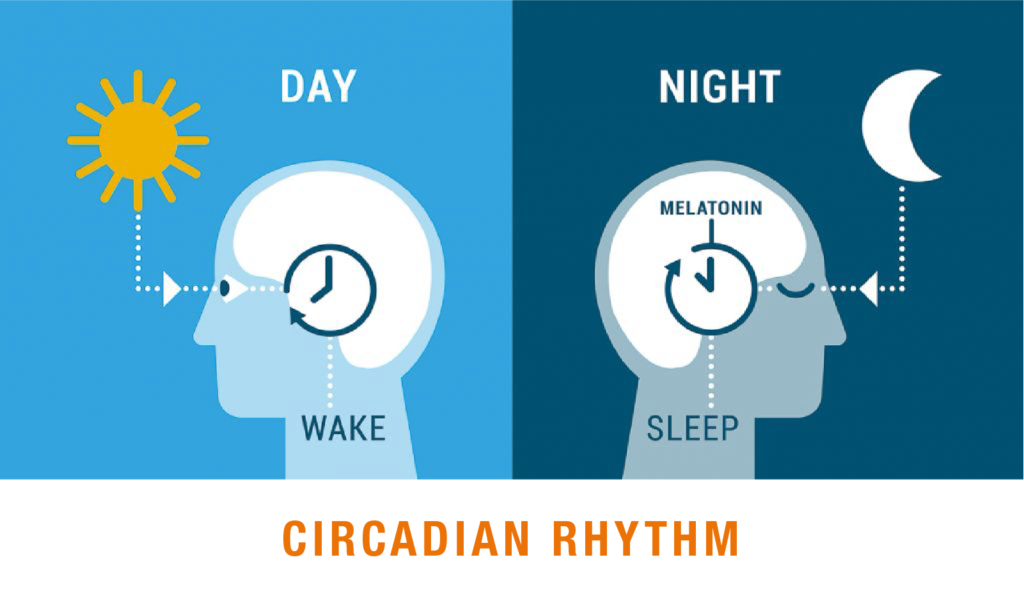
Our body has a direct connection with the circadian rhythm which revolves around the day/night, light/dark relationship.
During the day the body focuses on the production of energy through a constant secretion of cortisol, as well as dopamine and serotonin, while during the night we regenerate through sleep thanks to the melatonin hormone. Cortisol and melatonin are always in opposition, therefore if the first increases, the second decreases and vice versa: an alteration of this balance generates a dysfunction in the body’s circadian rhythm, with consequent alteration of numerous vital processes.
Adopt the rhythm of Nature, whose secret is patience.
Ralph Waldo Emerson
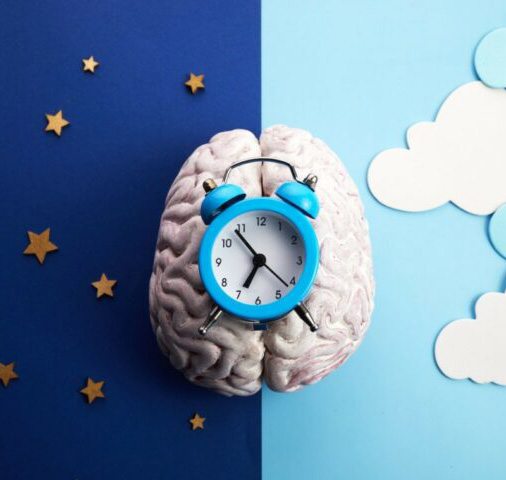
“We have a main biological clock which leads all body functions: it is located in the hypothalamus (an area of the brain) and is mainly regulated by the light-dark rhythm. Moreover every organ and every apparatus has its own cycle of activity and rest that must be respected in order to feel good”, explains the chronobiologist of the University of Ferrara Roberto Manfredini.
Therefore the light perceived by the retina is the main synchronizer of our main biological clock (master clock), also called “Zeitgeber”, the German term for “that keeps time”.
We know that light is a life element in nature, and it is true, but it is also rhythm: it guides us and shows us the speed and the right moment for our daily activities.
The third “eye”, a recent discovery
Science knew that light has the power to influence systems, but it could demonstrated it quite recently.
In fact, only at the end of the 20th century scientists discovered the existence of the third photoreceptor, it is a sort of retinal sensor that produces melanopsin, a photosensitive protein capable of sending signals directly to the human circadian clock. While rods and cones transmit sudden changes in brightness, the “new” photoreceptor tells the brain whether it is day or night. Its functioning is independent of the sight ability. Even in a blind person, in fact, the circadian rhythm is not altered.
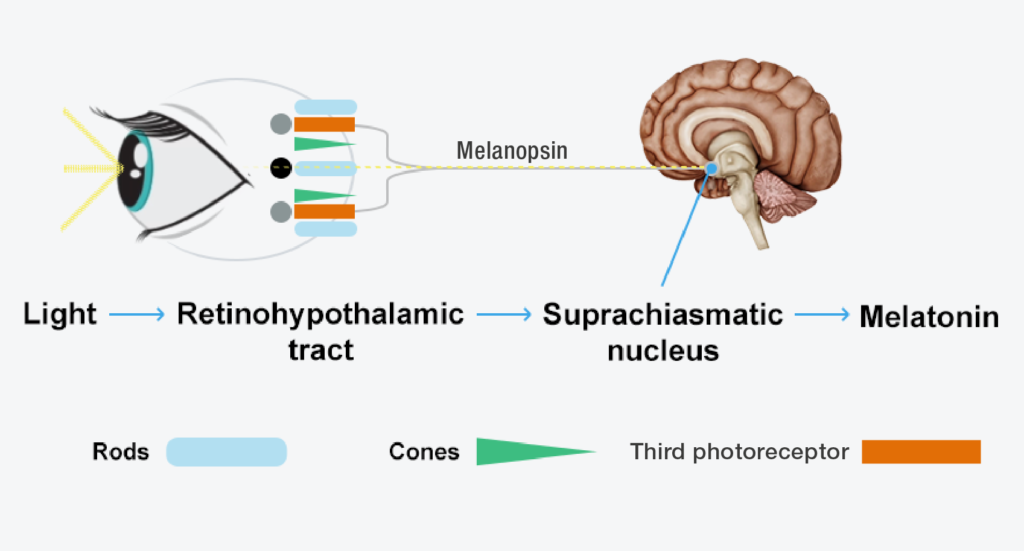
This scientifically discovery cleared that lighting conditions affect our body rhythms in a very precise way
It represents a great step forward and the basement for future research and development activities.
THE NOBEL PRIZE FOR MEDICINE
In 2017 the Nobel Prize commission awarded Jeffrey C. Hall, Michael Rosbash and Michael W. Young , 3 US researchers, for their discoveries on the molecular mechanisms that control the circadian rhythm.
The merit of this award was the confirmation of the scientific nature of the rhythms that regulate the body’s functions thus overcoming the doubts and perplexities that conditioned the subject.
The Light that marks the time
Light is the main tool through which we regulate our circadian rhythm.
This explains why exposure to light upon waking involves the suppression of melatonin and the production of cortisol, resulting in an increase in the individual’s performance.
Moreover this impact is influenced by other factors:
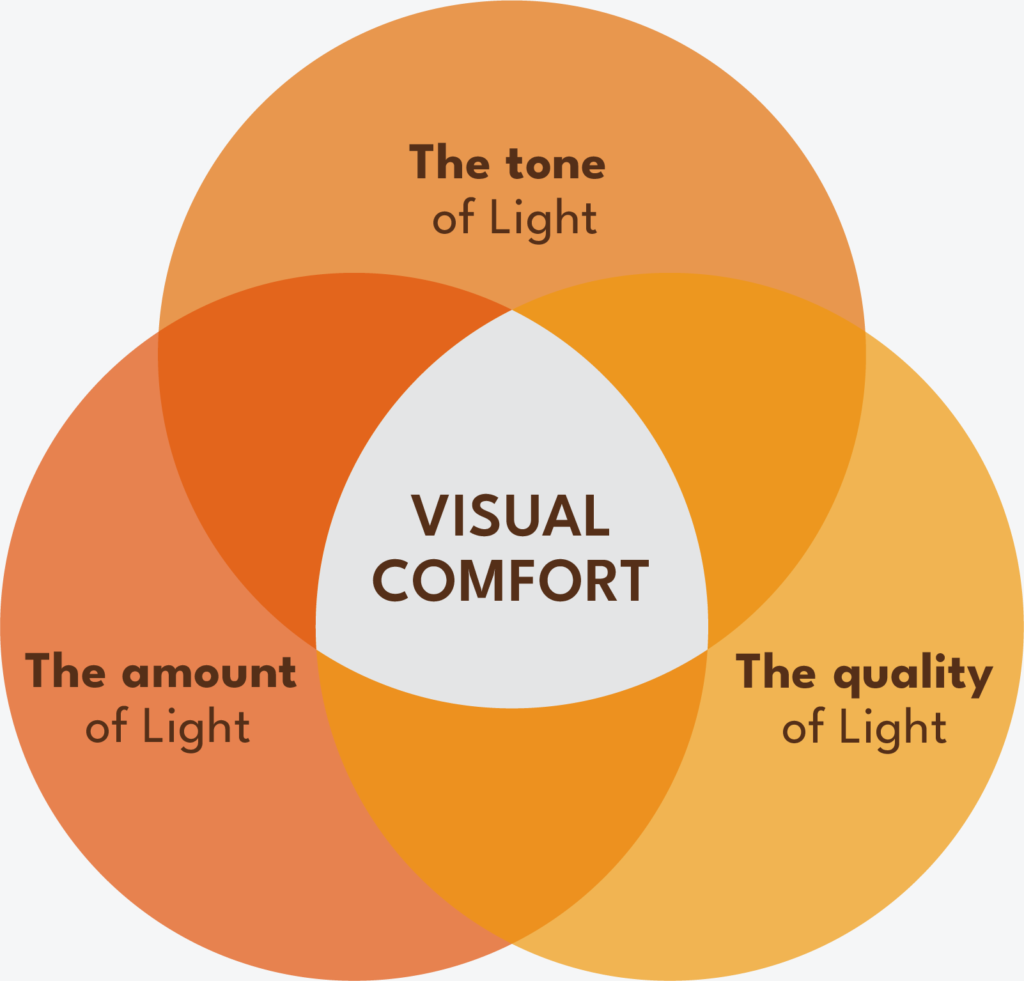
- the quantity: an intense light stimulus has a higher melatonin suppression capacity than a dimmer light.
- the way: sudden changes in the level of light influence the production or arrest of melatonin.
Three elements must be taken into consideration in order to create perfect visual comfort:
- the amount of light. Thanks to a well-balanced design, it is possible to reduce shaded areas in the environment which cause eyestrain.
- the quality of light, for greater definition of colours.
- the tone of light, or temperature, which defines the perceived color gradations.
Human-centric lighting

The circadian rhythm is the base of the concept for the human-centric lighting.
If it is true that light and well-being are an inseparable combination, it is equally correct to state that daily exposure to sunlight is at an all-timelow: nowadays, in fact, people spend indoor the 90% of time. The transition to artificial light very often has no connection with the conditions actually existing outside and this can imply a series of malfunctions of our internal clock with consequences on our health and well-being.
The impact of light on our circadian rhythm is more powerful than any existing drug
Charles Czeisler
The main purpose of Human Centric Lighting is to replicate the natural cycle of dark and light as closely as possible, through lighting that knows how to support the biological human rhythms.

Human-centric lighting therefore aims to simultaneously satisfy three fundamental aspects:
- visual ability
- the biological sphere
- the emotional sphere
There are therefore several parameters to consider for a human-sized lighting:
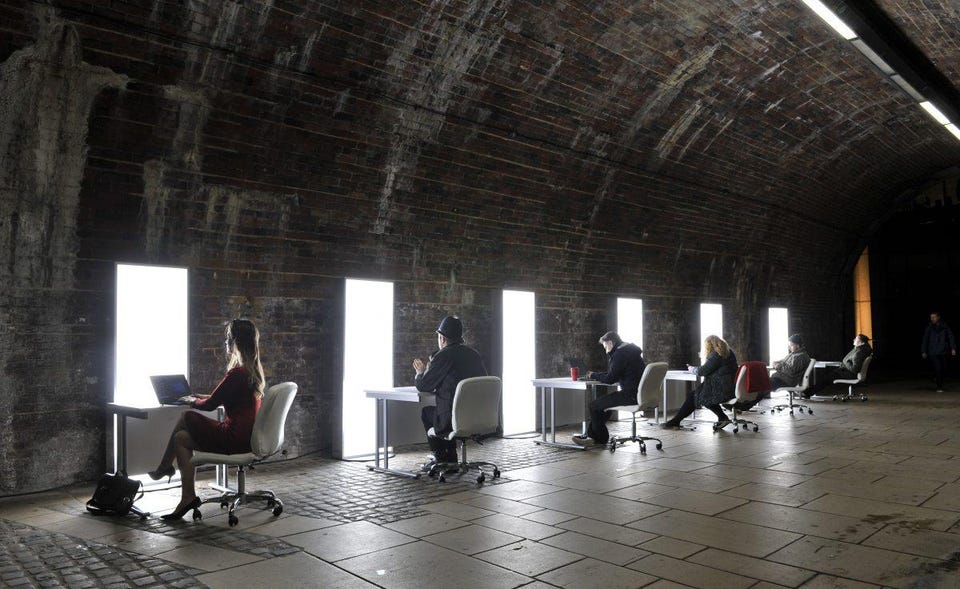
- light intensity; a high illuminance levels are much more effective at suppressing melatonin than gradual changes.
- the luminance.
- the temperature of the light, thanks to which we can make an environment cold or warm. The spectral composition is crucial in the stimulation of circadian rhythms, as melanopsin reacts more sensitively to blue light.
- glare, which should never be underestimated as it causes “discomfort”.
- color rendering. The color rendering index is crucial for some activities in which correct color recognition has a great importance.
The color of light
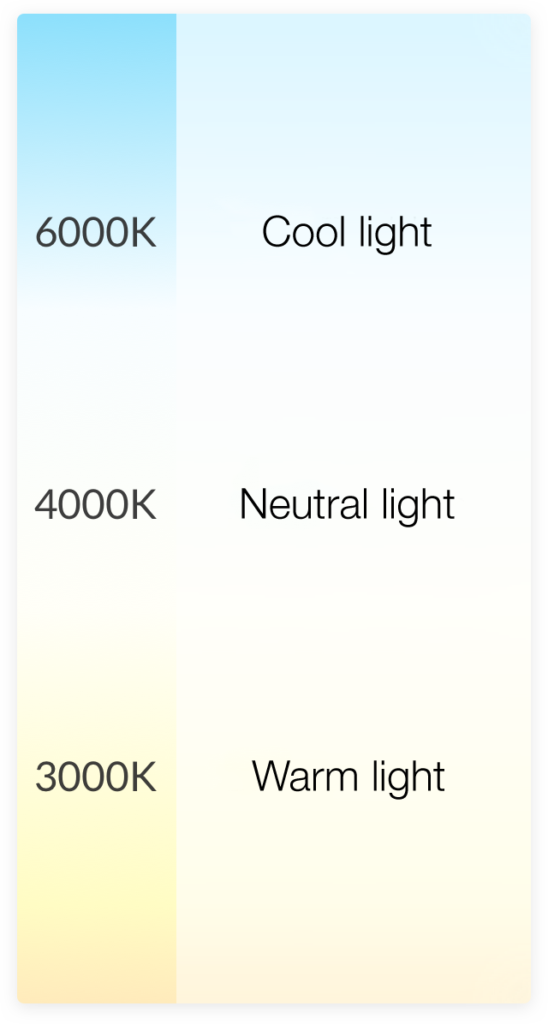
Among all these aspects, it is necessary to dwell on the temperature of the light that is the element capable of influencing the chromatic perception. Not all colors of light, in fact, have the same effect on human being. Researchers focused on this issue: blue wavelengths are beneficial during the day and not suitable in the evening.
This happens because natural light is continuously subject to temperature changes; in nature the warm light of the sunrise wakes up the organism progressively, and during the day we have a predominance of blue light, with a peak around mid-day which is around 5500°K, then decreasing as sunset progresses.
The blue light
Exposure to blue light in the evening suppresses melatonin secretion and causes sleep disturbances. On the contrary, during the day exposure to the same type of light signals the production of cortisol to our body and leads to an improvement in performance.
A study conducted by Harvard University demonstrates that the blue light has a doubled capacity in the suppression of melatonin if compared with the green light.
Blue light, commonly referred to as “cold light”, is very present in everyday life: LED lighting, the most energy efficient, tends to produce more blue light than traditional incandescent bulbs.
Solutions on a human scale
The solution to circadian rhythm disturbances consists of a series of choices in order to harmonize interiors with the specific human needs. Needs vary not only according to the time of day but also to the type of application: it is important to have the right light for each phase of the day and in a specific environment (home, office, hotel, hospital, etc…).
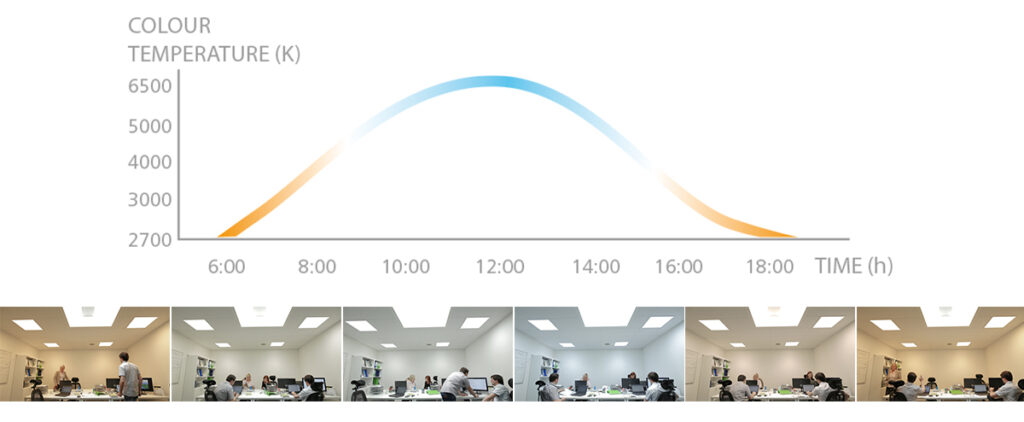
“Proper light at the proper time” is in fact what the CIE (International Commission on Lighting) recommends in its statement regarding the non-visual effects of light.
Artificial lighting can potentially have positive or negative impacts on human being, it all depends on its appliance.
The human-centric design of light produces benefits that are scientifically proven.
A 2015 study in the workplace, conducted by Lighting Europe with the collaboration of ZVEI, demonstrated that a design of light sources based on human needs has increased productivity by 4.5%, decreased errors and accidents by 2% and 1% absences.
LIGHT CONTROL
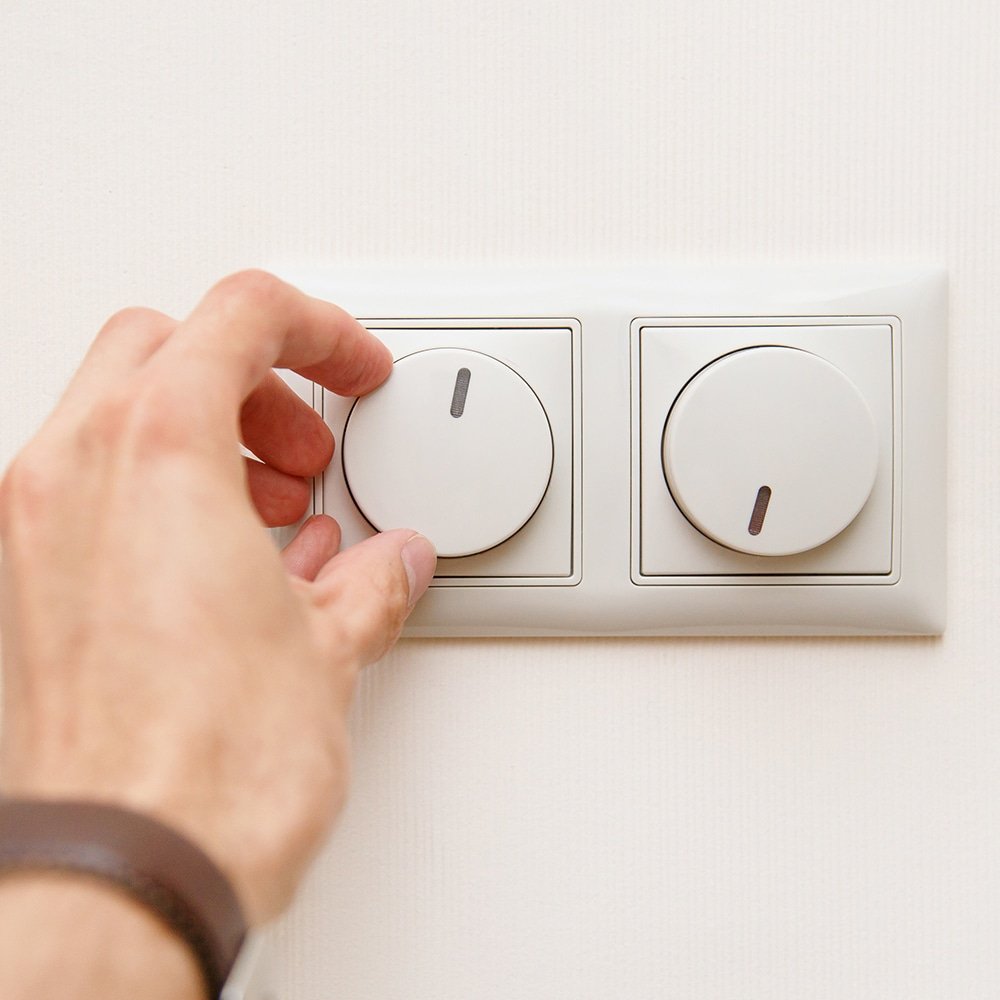
A constant and fixed light is therefore in complete antithesis with the concept of human-centric lighting: it isn’t comfortable and it is responsible for some negative effects on health.
The alteration of the circadian balance can cause sleep and mood disorders but it can also effect gastrointestinal and cardio vascular alterations.
Following the rhythms of nature should become an unavoidable imperative. Dimmability and more generally increasingly advanced control systems can modulate light for its multidirectional distribution, attentive to color temperature and different levels of illumination.
Understanding these key principles guides us in balancing the varied multiplicity of light sources available in homes and in all interior environments and it is the key to the art and science of lighting.
The culture of light
The culture of light is an important theme for Elesi Luce which supports initiatives aimed at developing a concrete sensitivity: the promotion of specialized courses to address the subject at 360° as well as collaboration with sector associations.
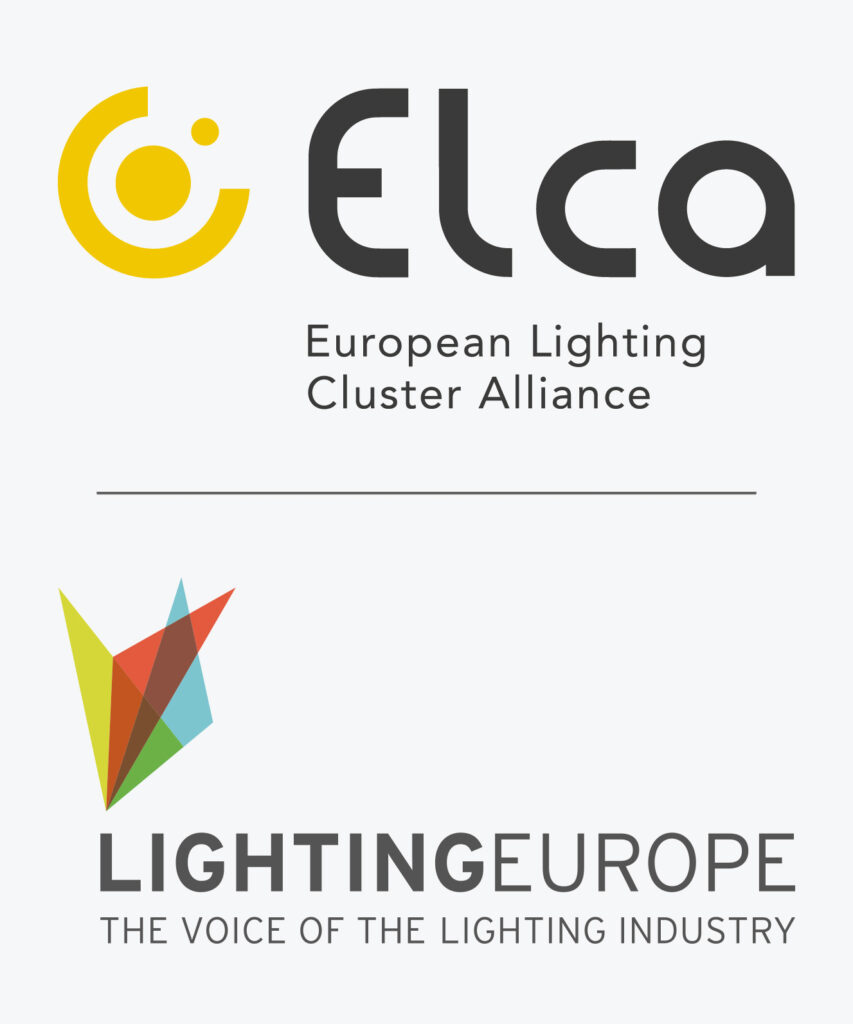
Considering the rapid development of the sector, continuous internal quality updating is essential. It possible thanks to international institutions such as Elia, Lighting Europe whose activities focus on increasing the value of lighting.
These peculiarities make Elesi Luce a company that counts among its values the lighting as a well-being method.
Due to misinformation on this issue, even insiders sometimes underestimate human-centric lighting. Elesi Luce helps to fill these gaps and thus contribute to the creation of a 5.0 society: sustainable, inclusive and, precisely, attentive to psycho-physical well-being.
The company aspires to the quality that is not only the identification of the most suitable color rendering or color temperature. Elesi Luce pursues a greater ideal in which light is an innate component of the space and not, as it often happens, a separate part of the electrical system.
The culture of light has the purpose of educating to a broader conception of lighting, in which the emotional impact is in perfect harmony with the biological stimulations that it is able to provide, in one word: well-being.




